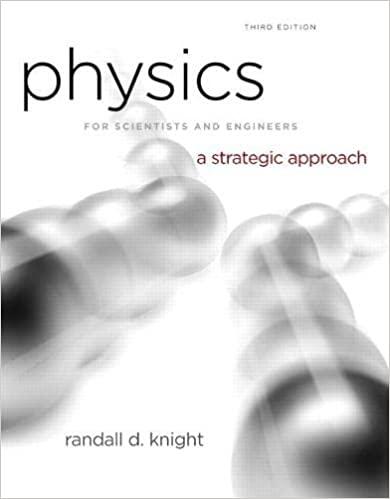Answered step by step
Verified Expert Solution
Question
1 Approved Answer
For each of the questions please provide step by step and do not leave any of the question. also write on paper then upload as
For each of the questions please provide step by step and do not leave any of the question. also write on paper then upload as a picture. Instructions: True/False Answer each question given below by answering if the question is true or false. In the textbox given, include your explanation for your choice. 1.A device is an object that transforms electrical energy into another form of energy. 2.A conductor is made of a material that allows electrons to flow freely. 3.A switch in an electric circuit can also be called a load. 4.A power supply may also be referred to as a source. 5.An electrical circuit that is not complete is called an incomplete circuit. 6.A short occurs when a load is bypassed in an electric circuit. 7.An electric circuit that is complete is called a closed circuit. Part A Multiple Choice:If calculations are required, the mark for the strategy will worth more marks. 8.The three main parts of a basic electrical circuit are a.source, control, and load b.conductor, control, and load c.source, conductor, and load d.source, conductor, and control 9.A load in an electrical circuit is a a.device to supply energy c.switch to control the energy b.conductor to carry the energy d.device to use the energy 10. A source in an electrical circuit is a a.device to supply energy c.switch to control the energy b.conductor to carry the energy d.device to use the energy 11.An open electrical circuit is a circuit a.visible to all parts c.with no electricity flowing b.able to receive a source d.able to add loads 12.A closed electrical circuit is a circuit that a.does not all parts visible c.can't have items added b.has electricity flowing d.has reached its maximum load 13.A short circuit is a circuit that a.has short pieces of wire b.only goes to one load c.has only a source, load, and conducting wires d.has no load 14.Electric current is a.the amount of electric charge/time c.the potential charge of electricity b.the cost of electricity d.the power of electricity 15.Alternating current has the charges moving a.in one direction c.into two loads b.in reverse directions d.into one load 16.Direct current has the charges moving a.in one direction c.into two loads b.in reverse directions d.into one load 17.Direct current would be most likely to be found in which device? a.vacuum c.television b.circular saw d.cell phone 18.Alternating current would most likely be found in which of the following? a.flashlight c.portable disc player b.computer d.calculator 19.Electric current in a circuit is measured by a.a voltmeter c.an ohm meter b.an ammeter d.a conductivity meter 20.Electric potential difference in a circuit is measured by a.a voltmeter c.an ohm meter b.an ammeter d.a conductivity meter 21.Conventional current in a circuit follows a.positive charges b.negative charges c.charges that flow on one direction only d.charges that reverse direction 22.Electron flow current in a circuit follows a.positive charges b.negative charges c.charges that flow on one direction only d.charges that reverse direction 23.Conventional flow current in a circuit a.starts at the negative terminal and moves to the positive b.starts at the positive terminal and moves to the negative c.starts anywhere in the circuit and moves in one direction d.starts anywhere in the circuit and reverses direction 24.Electron flow current in a circuit a.starts at the negative terminal and moves to the positive b.starts at the positive terminal and moves to the negative c.starts anywhere in the circuit and moves in one direction d.starts anywhere in the circuit and reverses direction 25.To measure current in a circuit, an ammeter must be connected a.across a single load b.across all loads c.in series at some point in the circuit d.in parallel at some point in the circuit Part C (Putting the Concepts to Work): Using your reading, answer the following questions. Give your answer as well as your strategy for determining your answer. As part of your answer, give the page number in the reference material or the website that you used to find the answer to the question. 26. Draw a basic electrical circuit using proper electrical symbols. 27.Describe the path of charges in an electron flow circuit. 28.Compare the flow of charges between a DC and an AC circuit. 29.Explain the proper connection of an ammeter into an electrical circuit
Step by Step Solution
There are 3 Steps involved in it
Step: 1

Get Instant Access to Expert-Tailored Solutions
See step-by-step solutions with expert insights and AI powered tools for academic success
Step: 2

Step: 3

Ace Your Homework with AI
Get the answers you need in no time with our AI-driven, step-by-step assistance
Get Started


